- Case Study
- Long Read
What is the first thing that comes to mind when you read “Greece”? Conversations between Socrates and Plato, Homer’s Odyssey, olive oil and feta, azure beaches? Whatever it may be, the name of the game is ancient heritage, centuries old, and rich in tradition. I bet nowhere on that list is a mention of a modern real estate development stretching across a whole peninsula – Costa Navarino. One of the oldest settlements in Greece, yet simultaneously the newest and hottest touristic destination createdfrom scratch.
Let’s think this over from the perspective of destination concept building.
…
It comes as no surprise that Nature is self-sufficient and sustainable unless humans come along and put sticks in the wheels.
Today, sustainability indeed is the word everywhere you look: fashion, economy, tourism, and beyond. Sustainable tourism, simply put, is the type of investment (along with the spectrum of actions it brings) that enhances tourism in the region, going beyond financial metrics to spotlight key characteristics.
Diagram 1.
There are well-known places that need no extra explanation, yet there are emerging destinations – either completely new or presented anew for newer audiences with new propositions or communications. Here is where visionary concepts step into the game to take real estate development to another level. Creating a sustainable destination requires a sustainable brand and innovative ideas rooted in local authenticity—cherishing legacy while breathing new life into traditions.
Visionary concepts have the power to transform a beloved place into a destination in its own right, offering a fresh perspective on familiar surroundings.
STRATEGIC PLACE-MAKING: HOW DO PLACES BECOME DESTINATIONS?
In some cases, it happens naturally, for instance, due to a robust and compelling geography or unique assets. Meanwhile, numerous places become destinations by adopting comprehensive, integrated strategies that have proven successful in creating and defining a shared identity for potential visitors. This is a meticulously planned chain of actions aimed at“mining for” authentic attributes that can differentiate this place from others with a strategic vision in mind – strategic place-making.
The assets developed and the overall environment play a crucial role in establishing a strong sense of place, providing a variety of user experiences, and enhancing the chances of attracting repeat visitors. Based on the dominant attributes, the types of destinations can be roughly divided into four main categories
It is okay to explore one of the categories, for example, embracing the full capacity of a self-sufficient neighborhood. Yet in practice, it is quite relevant to build ecosystems blending one or two clusters together, for example, envisioning a concept-driven neighborhood /Diagram 3/.
Diagram 2.
A great example of such a narrative can be the vineyards of Bodega Colome in Argentina. As they put it on the website, “Colomé is not just an incredible vineyard, it’s an incredible combination of taste, art, culture, adventure travel, gastronomy, and continually evolving potential. Visionary, Since 1831.” Aside from main products and experiences builtaround wine and vineyard, as well as a certain lifestyle narrative that comes with it, the product proposition is enriched with a conceptual museum inside the property. Remarkably, from a place-making perspective, it is a great example of exploring a strategic vision to capitalize on the most standout element of this magnificent high-altitude vineyard landscape: the natural sunlight. And here you go: on one hand, we get “The only museum dedicated exclusively to the work of the prestigious American artist James Turrell,” and on the other, a Light Experience Museum that reinforces the sense of place and popularizes the destination.
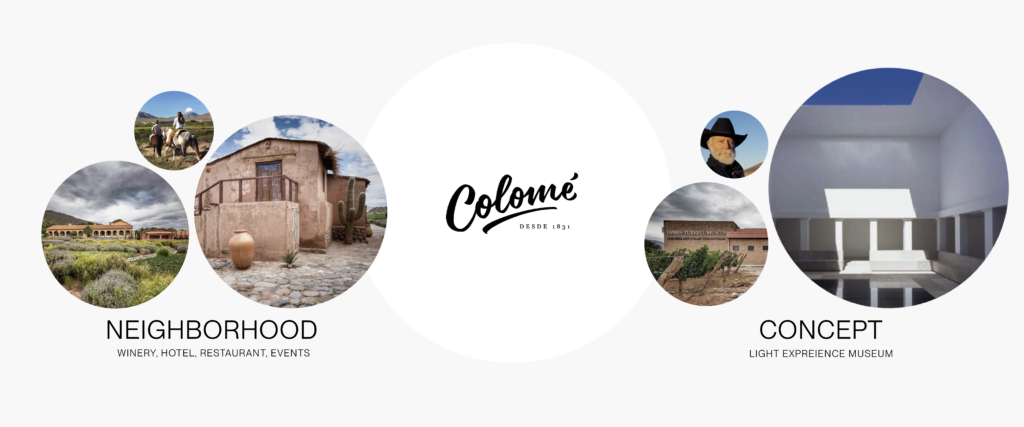
Finally, the pinnacle of modern-day destination development comes when visionary entrepreneurs take creation into their (and their professional teams’) hands and perform the classical magic of creation, although this one would not take six days, and the seventh would definitely not be for resting.
Costa Navarino – From Heritage to Economic Asset
This is a reinvention of a whole peninsula facing the Ionian Sea. Costa Navarino is a prime sustainable tourism destination located in the region of Messinia, in the southwest Peloponnese, Greece. The development of Costa Navarino is a case study in sustainable tourism and economic revitalization, spearheaded by the vision of Captain Vassilis Constantakopoulos.
Probably not as impactful as was the discovery of America, yet Costa Navarino can also be coined as a discovery worth recognition for its holistic approach to development, balancing luxury and sustainability, and serving as a model for future tourism projects worldwide.
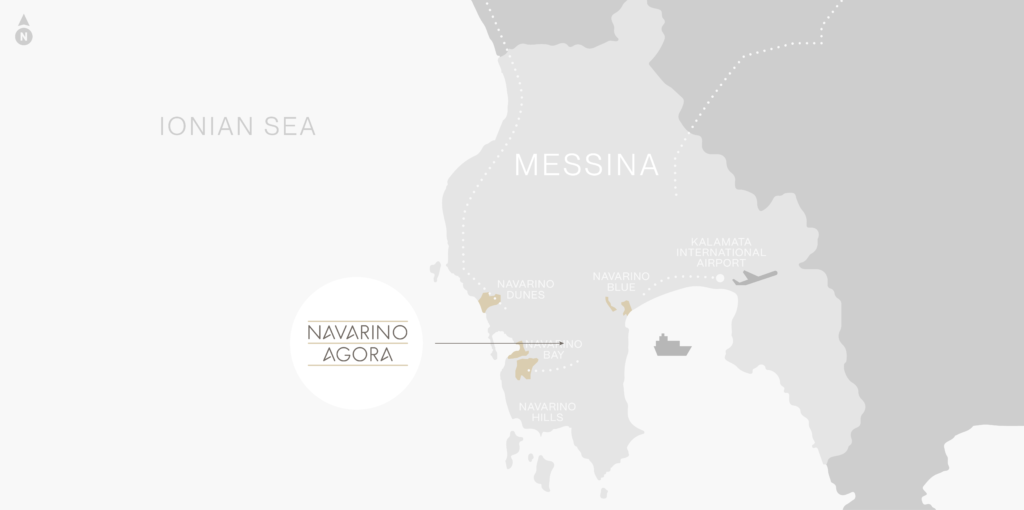
Sustainable Development is the key here as Costa Navarino integrates eco-friendly practices, prioritizing environmental preservation, energy efficiency, and the use of local materials. It features extensive green spaces, renewable energy sources, and has implemented water conservation measures.
Below, we highlight several noteworthy features if you are interested in place- making technologies and their sustainable benefits from both economic and social perspectives.
1. Building Robust, yet Authentic Architecture
Whether applied to an existing location or a newly developed one, maintaining a robust architectural and cultural narrative consistently reinforces the sense of place of a certain destination simply because it is honest. Modern-day high-end travelers prefer Culture over Luxury, escaping from generic luxury. They care more about authenticity, feeling welcomed into a community of locals while enjoying an array of high-quality amenities they are used to.
Let’s take the selection of international hotel operators in Costa Navarino as an example. These were meticulously selected to ensure alignment with the destination’s commitment to sustainability and cultural authenticity, as well as a smart balance in price points. These operators maintain a consistent style, look, and feel that reflect the local environment by using construction materials and design elements inspired by traditional architecture.
Every detail, from the selection of furnishings to the landscaping, is chosen to harmonize with the natural surroundings and cultural heritage, creating a cohesive and immersive guest experience.
Architecture of Costa Navarino
2. BUILDING MODERN DAY PRODUCT & EXPERIENCE OFFERING FROM TRADITIONS
Another economically interesting area is the exploration of ancient traditions, seamlessly transforming them into contemporary, appealing products and experiences. In the case of Costa Navarino, the destination offers unique and immersive opportunities that connect visitors with local culture – from wellness lifestyle to local produce.
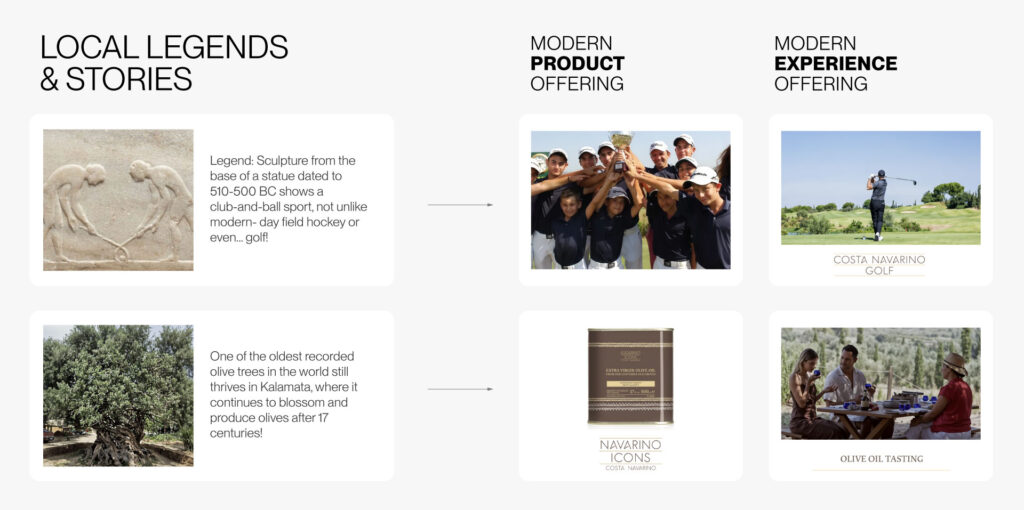
This approach combines historical authenticity with modern luxury, providing guests with an engaging blend of past and present through thoughtfully curated activities and high-quality amenities.
Here are some examples to see how this is turned into a system.
3. BUILDING DESTINATION BY BUILDING ECOSYSTEMS
The sustainable destination formula of Costa Navarino introduced a new model for tourism development – the success is based on the success of the destination as a whole. Every actor in the system plays their part and benefits from the overall consistency in return as the destination excels in appeal. Yet that largely depends on the extent to which the recreated context is holistic, targeted, and functioning as a unified ecosystem. The amount and consistency of the layers that build up the ecosystem compose an experience chain that generates customer satisfaction and high return rates. Built on the primary water resource as a summer beach vacation destination, there is much more that makes it a truly neighborhood type development (referring to the beginning of our article).

Diagram 3
4. CONVERGING TRAVELERS INTO RESIDENTS
It is not uncommon to support investments by providing residency acquisition possibilities. Additionally, this generates a community of like-minded people with a certain lifestyle choice, reinforcing the vision in the long run.
The message speaks for itself, “Costa Navarino Residences offer a unique combination of leisure and investment… but also about embracing the Costa Navarino lifestyle, an important part of which is respect for the natural environment and local communities.”
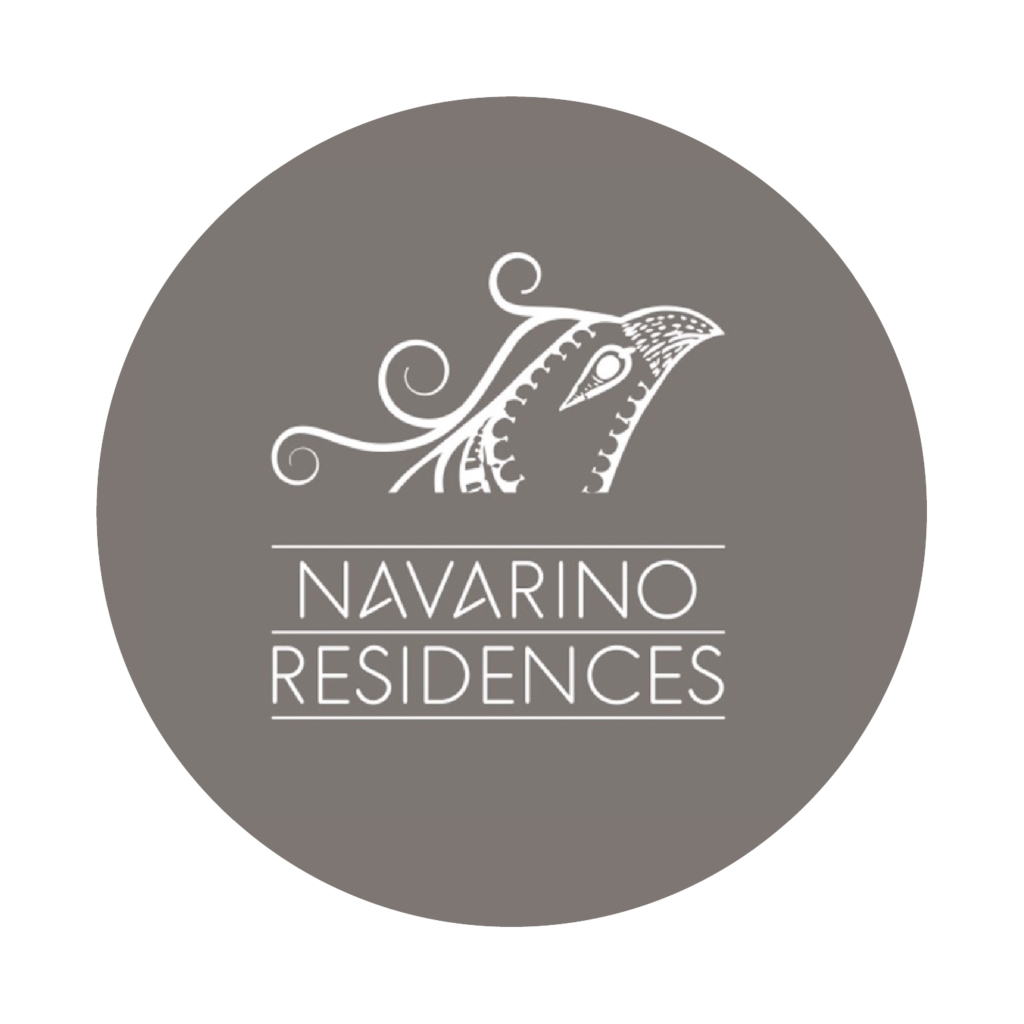
5. BOOSTING LOCAL COMMUNITIES AND INDIVIDUALS
A cultural and community focus acknowledges the importance of local culture, traditions, and history. It supports local communities through various initiatives and integrates cultural experiences for visitors, such as local cuisine, historical tours, and traditional crafts.
The success of a tourism business is directly linked to its ability to share the benefits of its operation with local society. By creating vital infrastructure, improving accessibility, creating new jobs and business opportunities, and promoting education and scientific research, Costa Navarino actively contributes to the welfare of the local community.
6. BOOSTING LOCAL BRANDING LOCAL PRODUCE
A cultural and community focus acknowledges the importance of local culture, traditions, and history. It supports local communities through various initiatives and integrates cultural experiences for visitors, such as local cuisine, historical tours, and traditional crafts.
The success of a tourism business is directly linked to its ability to share the benefits of its operation with local society. By creating vital infrastructure, improving accessibility, creating new jobs and business opportunities, and promoting education and scientific research, Costa Navarino actively contributes to the welfare of the local community.
And finally, place-making is considered strategically vital, especially for certain countries, due to its potential effects on national identity building, even if this is not the primary target.
7. PROMOTING & POPULARIZING ALL THINGS NATIONAL, IN THIS CASE, “GREEK”
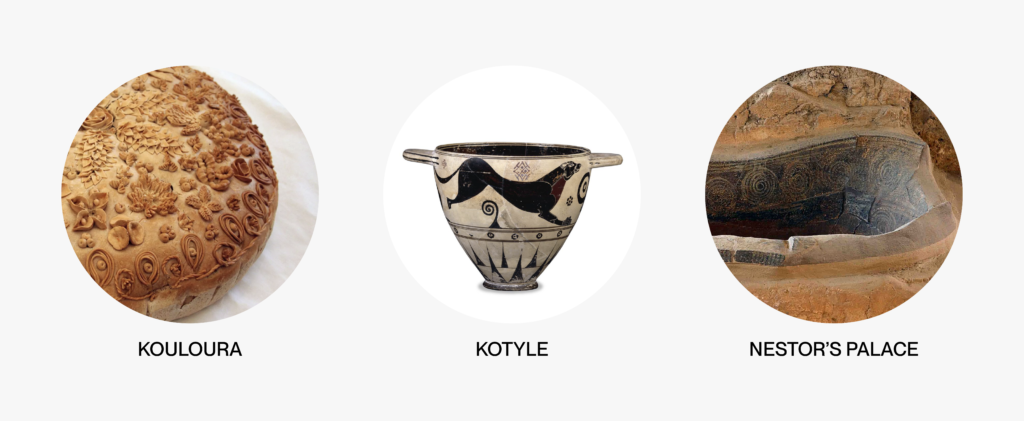
The final accord in building a destination is to clearly make it a destination – a domain exit to the area waiting to be explored. Explore, buy and get the delivery, book a villa, read and get inspired, fantasize on the next trip there, whatever makes you happy.
…
This was a short exploration into an emerging era of destination/property development – meant to make visitors happy, place-makers occupied, and the developers economically gratified from our happiness ☺

- By Marina Ghazaryan
- Concept Strategist : Maeutica
